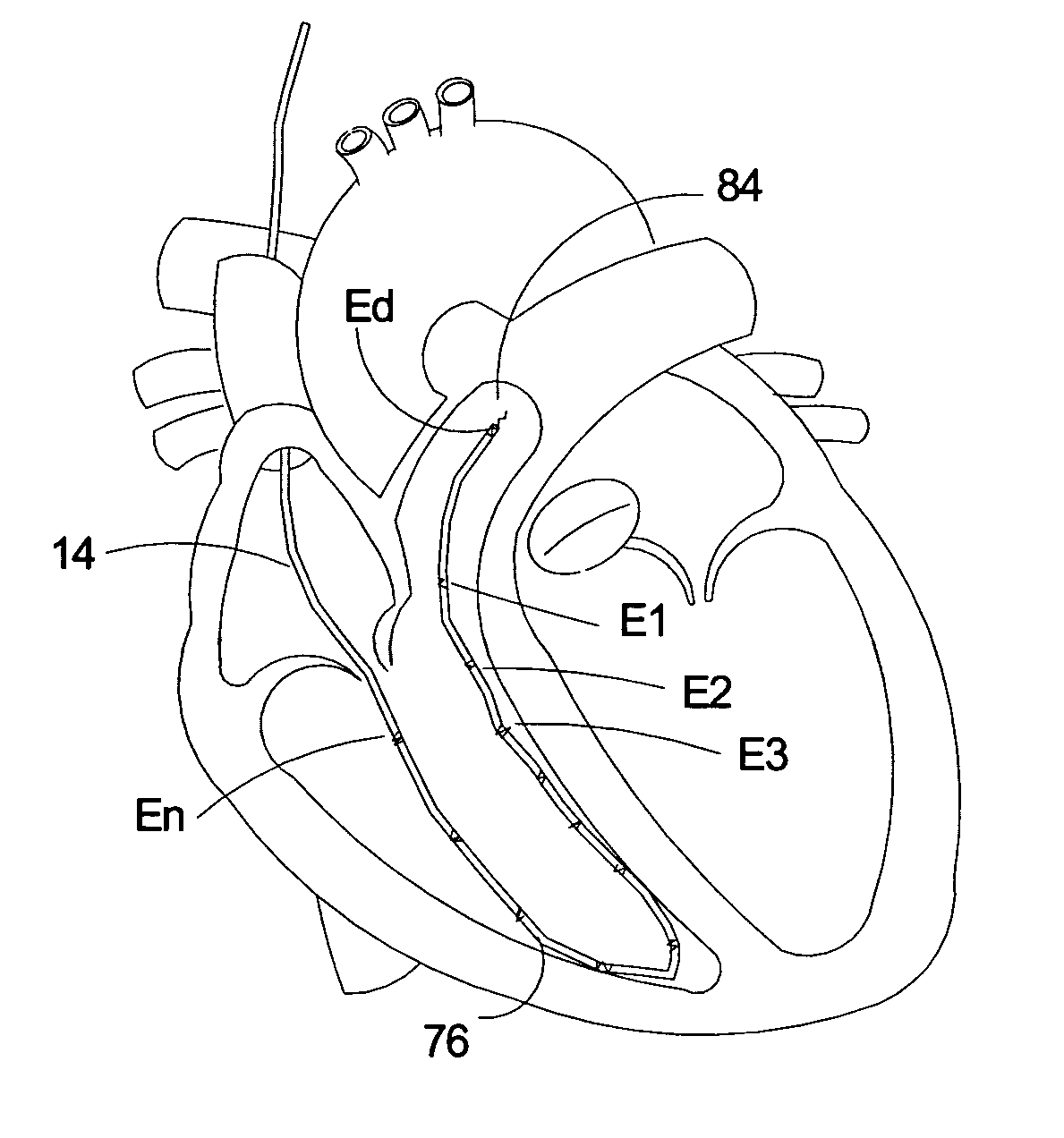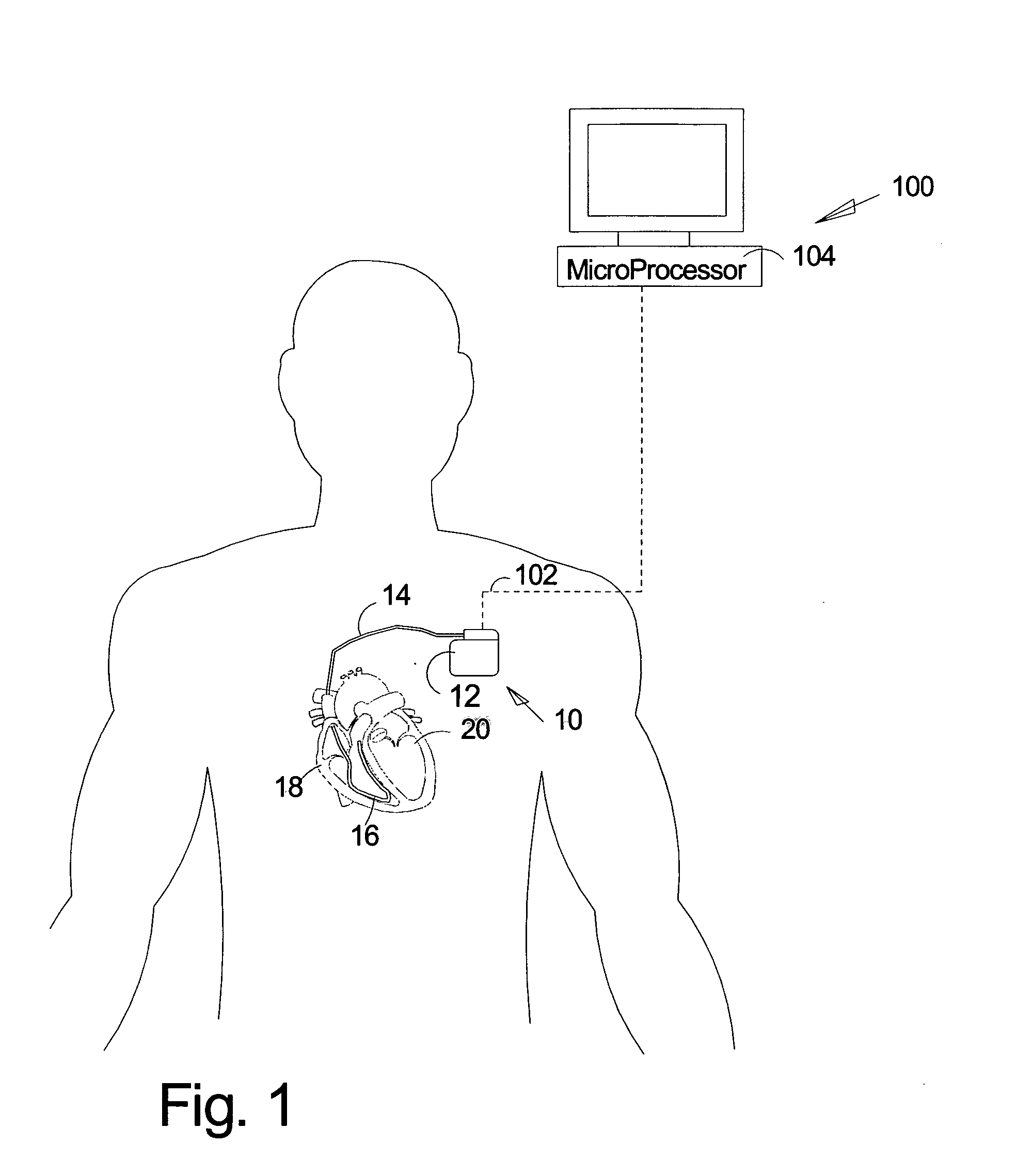Method for multiple site, right ventricular pacing with improved left ventricular function
a right ventricular and pacing technology, applied in electrotherapy, therapy, heart stimulators, etc., can solve the problems of congestive heart failure, cardiac contraction, not observable on an ecg, etc., and achieve the effect of improving the contraction of the rv and less tim
- Summary
- Abstract
- Description
- Claims
- Application Information
AI Technical Summary
Benefits of technology
Problems solved by technology
Method used
Image
Examples
Embodiment Construction
[0057] The subject invention pertains to an implantable cardiac stimulation system 10 including a cardiac stimulator 12 with various electronic circuits, and a multi-electrode lead 14 attached to the stimulator 12, as shown. The lead 14 has a distal end 16 disposed in the right ventricle 18 of heart 20. The system 10 is adapted to deliver therapy in the form of electrical pulses. The cardiac stimulator 12 contains electronic components common to current cardiac stimulators such as a battery, microprocessor control circuit, ROM, RAM, an oscillator, reed switch and antenna for communication, output circuits, and sense circuits. These components are well known to those of skill in the art. It is believed that a standard pacemaker, capable of unipolar or bipolar pacing and equipped with what is known as an “IS-1” connector could be used to deliver the therapy described herein, provided a sufficient number of electrodes are deployed. These electrodes may be of small size, to reduce power...
PUM
 Login to View More
Login to View More Abstract
Description
Claims
Application Information
 Login to View More
Login to View More - R&D
- Intellectual Property
- Life Sciences
- Materials
- Tech Scout
- Unparalleled Data Quality
- Higher Quality Content
- 60% Fewer Hallucinations
Browse by: Latest US Patents, China's latest patents, Technical Efficacy Thesaurus, Application Domain, Technology Topic, Popular Technical Reports.
© 2025 PatSnap. All rights reserved.Legal|Privacy policy|Modern Slavery Act Transparency Statement|Sitemap|About US| Contact US: help@patsnap.com



